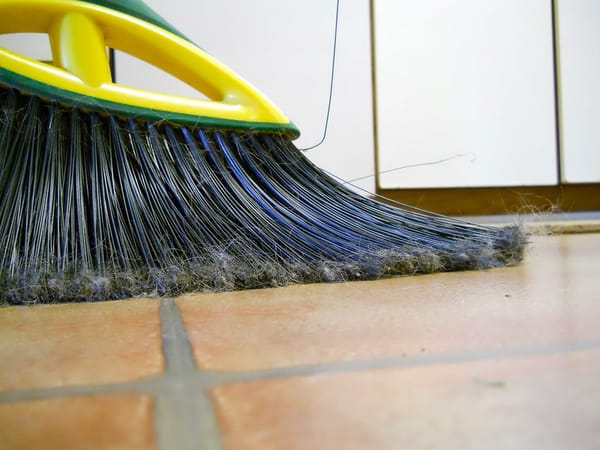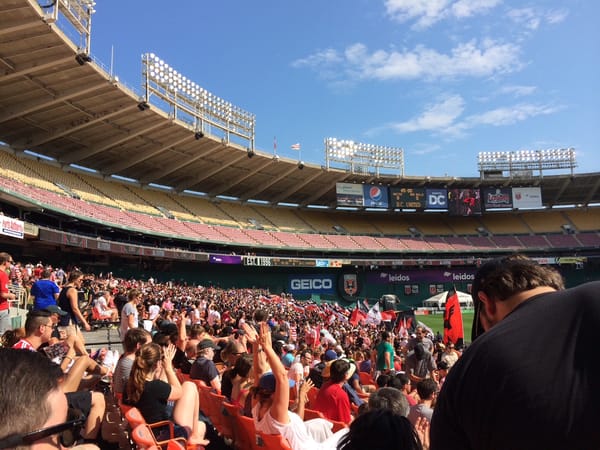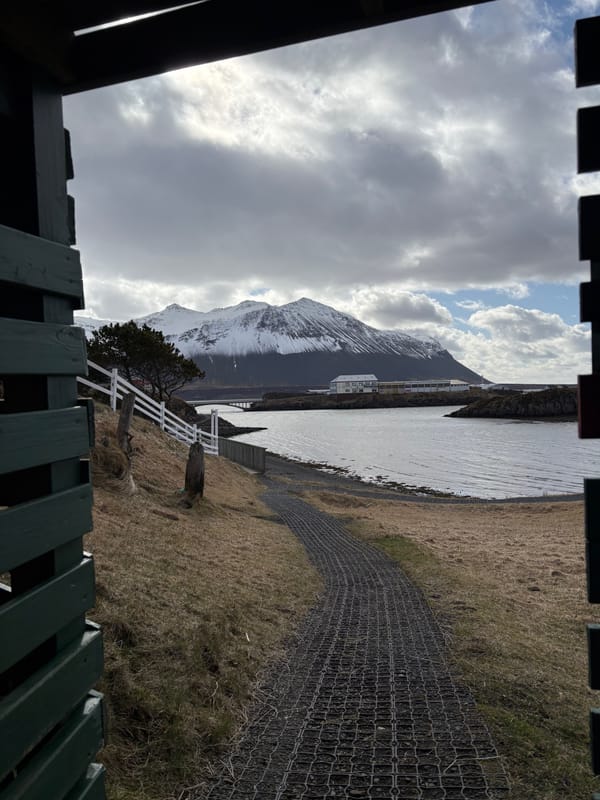Staying safe
I'd only ever felt unsafe once living in Washington, D.C. At least until last week.

Before every bike ride, I try to run through at least a quick safety check on my bike. Press the tires with my thumb to see if they feel flat and, if so, pump them back to the right pressure. Make sure the wheels spin freely. Make sure the brakes work. Throw the tail light on the back, and I’m ready to go.
Likewise, I’ve learned the streets and paths around my house with less traffic, fewer obstacles, and bad intersections, and how to approach the inevitable displays of awful urban planning with the appropriate caution. I’ve not, to date, had any collisions with other bikes, cars, or pedestrians. My only crashes have been my own fault, but they have also taken place in isolation, not being reckless somewhere where I might endanger anyone else.
Last Sunday morning, I decided to do a group ride I hadn’t done in a long time, rather than join my usual weekend crew for their longer ride, along more heavily-trafficked, nastier thoroughfares. I didn’t really have the time to join them, but I also didn’t love the idea of the route. I figured the other ride was on familiar terrain, and I could get a quiet hour in ahead of the meetup time by noodling through the quiet, canopied roads of Rock Creek Park, of which the main artery – Beach Drive – is closed entirely to cars.
Leaving my house at 7:30 a.m., I hardly dealt with any traffic as my brain settled into its happy place during those lower intensity, solo rides. They function as my therapy as much as anything (insert your men-will-literally-spend-$X,000-on-a-bike-instead-of-going-to-therapy joke here), and a chance to reset my brain before, or after, a particularly stressful week. As you may have heard, we’ve had a few of those recently in D.C.
As I descended Park Road from the Mt. Pleasant neighborhood down toward its intersection with Beach Drive, I passed a family of deer along the right side of the road, not an uncommon occurrence. I didn’t see a single car on the descent, just another cyclist, who I closed in on as we crested the final hill before the last dive down to the intersection. He slowed, then suddenly stopped.
Below us, a red cab was sitting in the middle of the road, bumper smashed. Same with a sedan, turned at an unnatural angle. There was debris – headlight covers, pieces of fenders, assorted bits and pieces of car exterior, but more than seemed to have come off those cars.
I eased down the hill and made the blind, right-hand turn onto Beach, only to find myself very suddenly in the middle of something my brain was not ready for. There was at least one other car, which had veered off the road into the embankment. Behind it were several federal law enforcement vehicles, with officers in tactical vests, some masked, dragging people out of the cars and handcuffing them. One officer, a Hispanic woman, shouted at them in Spanish. Another, a black man, had made his way over to another cyclist who had happened upon the scene from the other direction and was filming with his camera. As I arrived, the officer was trying to take the man’s phone away from him.
“Hey!” the cyclist shouted at me. “Get your phone out and start filming!”
Before last weekend, I had felt unsafe exactly once in my 14-plus years living in and around Washington. One evening in my first year working in D.C., I joined some coworkers for an event at the then-under-construction Washington Nationals Youth Baseball Academy. The building sits along the north edge of Fort Dupont Park, a hilly greenscape in Ward 7; like its Ward 8 neighbor, its population is more than 80 percent Black.
They’re the kinds of neighborhoods that the politicians who complain about not feeling safe in Washington have never dared to visit, unless they’ve accidentally taken the wrong offramp off the highway.
My coworker and I left the event fairly late in the evening on a weeknight, and were making our way back toward our offices at Nationals Park, just on the other side of the Anacostia River. He was driving; I was in the passenger seat. We came up behind a stopped car in the middle of the road, the driver clearly distracted. My coworker honked. He may have honked twice – it’s been nearly a decade-and-a-half, so my memory isn’t crystal clear on that part. But I remember what happened next.
Two teenagers emerged from the car, one from each side, and started walking towards us threateningly, the driver swearing loudly. My first reaction was to freeze. I didn’t have any control over what was about to happen, as I wasn’t behind the wheel. My coworker also froze. When the teenagers reached our front bumper they stopped, continued yelling for a minute, then turned around and returned to their car, speeding off.
I’m not sure if they ever intended to do anything, or to just try to intimidate us. I also don’t know what they thought when they saw us – two roughly 30-year-olds, one white, one black, wearing office clothes. I don’t know what made them decide to turn around without doing anything more than verbally expressing their anger at being honked at. The last time I’d seen someone get out of their car after a road rage incident had been the summer prior in Omaha, where a scraggly white guy in a tank top went up to the driver of the car in front of him and started wailing on him through the open window. So I had been preparing myself for worse.
But that was it. I’ve seen plenty of standard big city idiocy since then, but have never felt physically unsafe since then in any way. Until last weekend.
Again, at first, I froze. My brain was still waking up to the situation, still evaluating how close I was to the officer and the cyclist – maybe 15 feet – and doing the quick math on what I would need to do to get myself out of the situation. There were no other witnesses in my line of sight. As I saw the struggle between the two continue, I started reaching for my phone. Seeing that, the officer relented and let the cyclist go. Suddenly, he was outnumbered by possible cameras.
He and the cyclist bickered back and forth in a pair of one-way interrogations.
“What’s your name?”
“Am I free to go?”
Neither answered the other, just volleying their same questions at each other until the cyclist was able to break free. I took the moment of confusion to slip around them to a safe distance, where I could take stock of the moment, as well as a couple of photos.
The officers, unlike the national guardsmen grandstanding around our tourist traps, were mostly black men. They were driving unmarked cars with Maryland plates. It became clear, as the reality of the situation settled in, that they hadn’t happened upon the scene, but had almost certainly caused it, something that’s evidently become a trend in recent weeks. A rider at the group ride I ended up at confirmed he’d heard a car chase go down into the park right on the same timeline.
Mind you, there was no medical response on the scene. It had pretty clearly just occurred, no more than a couple of minutes before I’d arrived, at 7:45 on a Sunday morning.
I called my wife to let her know what had happened and to help myself remember the details. A few minutes later, I circled back around on the path that runs parallel to the road, on the other side of the creek, to get another look from a safe distance. By then, an ambulance and fire truck had arrived. People were walking their dogs, and jogging, and cycling up the path, oblivious as to what was taking place 50 feet away.
All of this is being done here – and, perhaps, elsewhere soon – in the name of making D.C. safer, despite nobody here asking for any of it.
So, how does any of this make any of us safer? Is it safer to have car chases dive-bombing into our city’s central recreation area on a Sunday morning? Is it safer to have armed military members from out of state, without proper deescalation training, roaming unfamiliar streets? Is it safer to have mine-resistant tanks on our roads, running lights and crashing into cars? Is it safer to bulldoze encampments of people who already have nowhere else to go, just so they have to set up shop again somewhere else?
Our feckless mayor went on TV to laud the lower crime stats of the last couple weeks, weeks in which the people who live here have – with good reason – stopped going out and patronizing local businesses as much. While this enforcement may provide a temporary dip in the numbers, it’s terrible for our economy, and not a sustainable solution. And people have, rightly, also slowed their food delivery orders, so as not to put our largely immigrant delivery driver population in harm’s way. But of course, that also means they aren’t getting work. Either way, the solution only creates more problems.
So what comes next, when the 30-day order expires this week? Will the $1 million per day charade continue? What will it take for the streets of our city to be returned to those of us who live, work, eat, pay taxes, and raise our children here? After all, you’re spending our money, without our input. I’d just like to know when it will be safe to go about living again.



